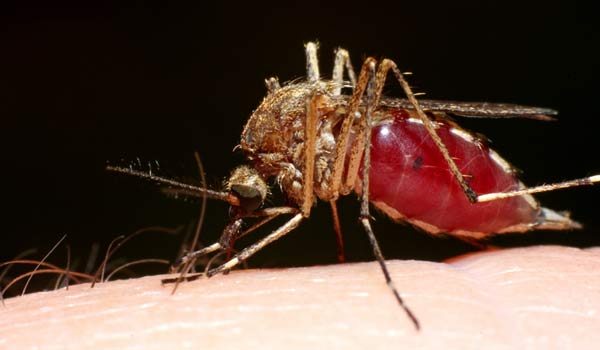Ward Off Disease-Carrying Skeeters with... Chocolate Fragrance?

You can slather on the DEET and light citronella candles this summer, but you still divulge your location to hungry mosquitos just by breathing. Like a smoke signal, mosquitoes can track a potential meal yards away by smelling the carbon dioxide we exhale in each breath.
But now, researchers say they are close to developing fragrances that attract and stun mosquitoes' carbon dioxide sensors.
"Some of them smell minty, some smell fruity, and some smell like caramelized chocolate," said Anandasankar Ray, an entomologist at University of California Riverside.
When West Nile virus, dengue fever or other mosquito-borne illnesses pop up in the United States, officials have the resources to set carbon dioxide traps, Ray said. But the traps are often impractical for many families battling mosquitos, especially in developing countries struck by malaria. The World Health Organization reported malaria infected 216 million people, and killed 655,000 in 2010.
In 2011, Ray and his colleagues discovered that certain compounds mimicked carbon dioxide closely enough to trigger mosquitos' carbon dioxide sensors. Some compounds attracted mosquitoes, and others overstimulated them, leaving them disoriented and unable to track carbon dioxide plumes for several minutes.
The Aedes mosquito, which carries dengue fever, the Culex mosquito which carries West Nile, and the Anopheles mosquito that transmits malaria, all responded to the compounds.
"These are the three main species that transmit human disease," Ray said.
Sign up for the Live Science daily newsletter now
Get the world’s most fascinating discoveries delivered straight to your inbox.
But the first generation of carbon dioxide mimics were too dangerous in high concentrations for public use. So members of Ray's lab created a computer program to screen half a million known fragrances to find more carbon dioxide mimics.
"We went from a handful to a thousand chemicals as potential lures and repellents," Ray said. Lab members then puffed samples of the promising compounds onto living mosquitoes to test if the scent activated their carbon dioxide sensors.
"We were able to go through these chemicals and identify the ones that were found in nature, the ones that had pleasant smells, and ones that had safety features," Ray said.
Repelling mosquitoes is no easy task
Mosquito-control experts have long struggled to find repellants that are safe and effective. DEET, considered the gold standard of mosquito repellants, masks the odors from human skin. Natural repellants exist, but most alternatives to DEET are less effective or more dangerous, said Joe Conlon, technical adviser for the American Mosquito Control Association.
Mint-flavored fragrances that mimic carbon dioxide's attraction would help, but neither Ray nor Conlon expect they would rid us of mosquito bites entirely. DEET, along with a push and pull system of lures, traps and repellants would mount the best defense.
"Mosquito attraction is considerably more complicated than people think," Conlon said. "Carbon dioxide is not so much an attractant as an excitant. It gets them up and starts a cascade of events that gets them looking for blood meals."
Once a mosquito is near a group of humans, many other factors determine where it may land and bite. Not every species of mosquito bite humans. Humidity, temperature and even the microflora living on skin may attract or repel a mosquito. These complicated chemical cues differ among the 176 different species of mosquito in the U.S., and the 3,000 species of mosquito documented worldwide.
"In repellent research, we're just scratching the surface," Conlon said.

Flu: Facts about seasonal influenza and bird flu
What is hantavirus? The rare but deadly respiratory illness spread by rodents









